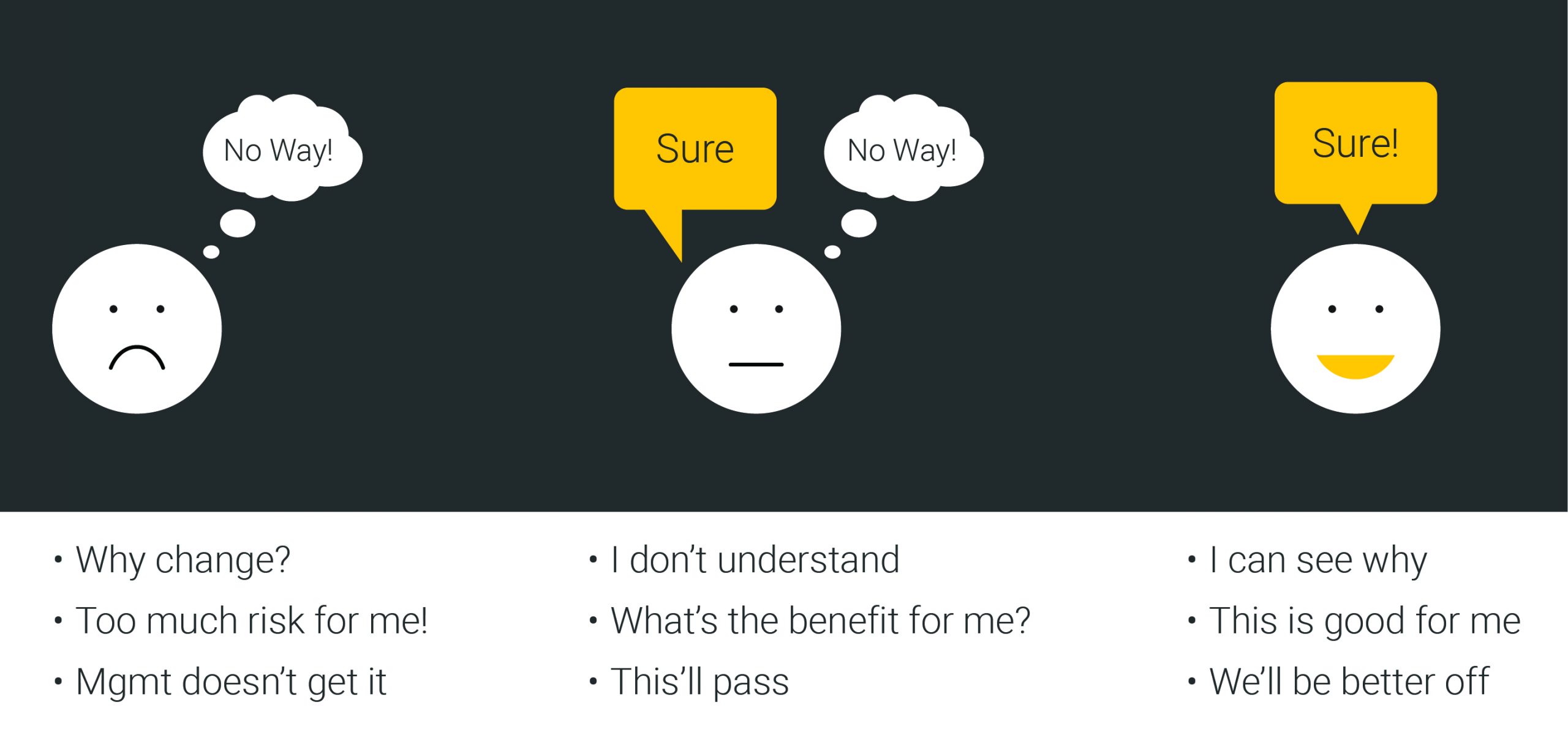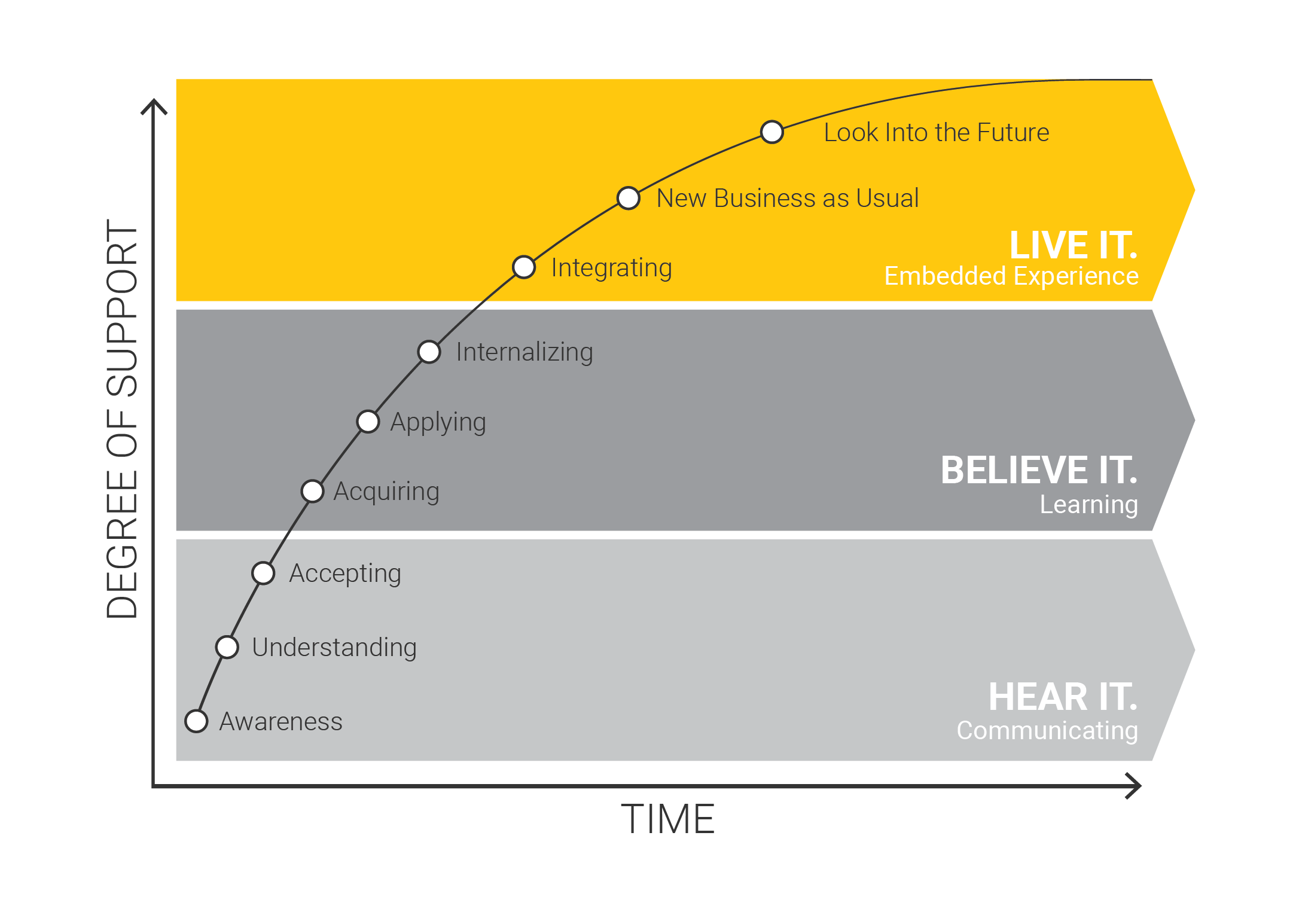You want to get your organization from Point A to Point B, and you’ve got a strategy to do it. Perhaps you developed it with your team, or perhaps, like many large organizations, you’ve invested precious dollars to hire a management-consulting firm to develop it with you. Now, that 100-page PowerPoint deck needs to go from plan to action. How do you bring it to life?
The biggest mistake leaders make in executing strategy is “throwing it over the wall” and expecting their team to execute it. Most businesses develop a strategy, and then announce it at an All-Hands meeting, cascading team meetings, and a series of emails. That’s not sufficient. In fact, that will almost ensure that 80% of your company will do nothing to move it forward.
Working with many of the world’s largest companies over the last 25 years, we’ve observed that with any major change initiative, there’s an 80/20 rule at play. When employees hear about a new direction—be it a major strategy or a new process—only about 20% of the team really jump on board; they see why it’s important, they understand what’s in it for them, and they see that Point B is a better place to be.
The 80/20 Rule of Behavior Change

The other 80% is the problem. Part of that group will adamantly reject the change— they don’t understand why it’s needed, they fear the risk to their own security that comes with change, and they might question whether management really understands the business “on the ground.” The other part of the 80% is even more dangerous. They’re the ones that say “Sure” to your face, but they are really thinking “No way”—either because they don’t understand the reasons for the change, they don’t see a benefit for themselves, or because they view this as another “flavor of the month” that will pass if they just ignore it.
If as a leader you don’t address this problem thoughtfully, skillfully, and immediately, your initiative will fail. Just as a great set of blueprints won’t build your house, having a strategy is not sufficient to realize it—you must invest not only in the strategy, but also in a strategy activation plan.
Strategy activation takes shape in many ways, but typically it considers the combination of communication tools, training, and consistent, ongoing coaching that’s required to move employees and key stakeholders up the Activation Curve. This tool represents not only how people learn information, but also how they engage with it and hopefully advocate for it, at which point you know you’ve successfully overcome the 80/20 problem, and have an aligned, engaged team.
The Activation Curve

In the first stage, as with any new information, stakeholders “HEAR IT”. This is typically achieved through thoughtful and consistent communication programs. These programs must not only communicate the “What” of your strategy, but also the “Why” of it—explaining with clear arguments and data why the organization will be better off. And finally, and possibly most importantly, at this stage you must help your audience understand “what’s in it for me?” At the end of the day, we as humans won’t accept a change unless we see how we’ll be better off.
In the second stage of the Activation Curve, our focus must be to help people “BELIEVE IT”. Programs around this stage are largely focused on learning and skill-building—giving people the tools and opportunities to build new skills or ways of working, rehearse the new way, apply it in their work, and see the results. This is an ongoing effort, and requires investment of time and resources, but it’s often the stage that is most critical in building the inertia for an organization to shift.
In the final stage of the Activation Curve, real and lasting change won’t occur until employees are “LIVING IT”. This is when you know you’ve been successful in activating your new strategy—the majority of your team has integrated it, it’s the new normal of how the organization operates, and people are seeing the same future that you do. This stage often requires tactical shifts in the structures and processes in your business, such as on boarding, incentives, or business processes, so the entire organization is fully aligned with the new way of work.
Leaders, and the organizations they lead, will most likely fail if they are not as thoughtful about the investment that is needed to activate their strategy as they did developing the strategy itself. We need to go beyond just announcing our intentions, and make very real investments in helping people not only hear it, but also believe it, and actually live it. Once your team is aligned, and truly moving forward together, that’s when your strategy will actually come to life.
